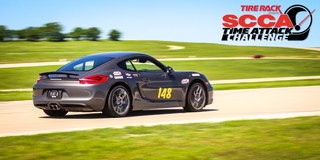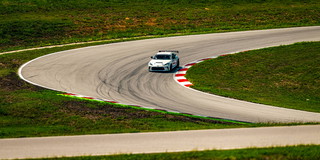
The Time Trials Board (TTB) has released the final classing and prep rules to be used at the 2018 Time Trials Nationals (TTN) event taking place September 28-30 at NCM Motorsports Park in Bowling Green, Kentucky. Previously, the board had released final language for prep rules and classing at the Max and Unlimited level. Today’s release now adds finalized classing for Sport and Tuner.
In setting the classing for Sport and Tuner, the TTB relied heavily upon participation data from Track Night in America Driven by Tire Rack events. The committee’s opinion is that this data is most valuable as it reflects vehicles that enthusiast already own and bought largely based upon desire. This is in contrast to participation data collected from competition events where a significant number of vehicle purchases are based upon competitiveness and classing.
The data was used to identify popular models the committee believed most needed to have competitive classing within TTN rules. The models at the top of this list included Ford Mustang and Chevrolet Camaro, the Subaru BRZ and Scion FR-S, BMW 3 Series, Chevrolet Corvettes, a variety of Porsches, Honda S2000, Ford Focus ST and multiple generations of Mazda MX-5 Miatas. While the rules were not built with the idea that these cars should or will be “class killers,” the committee believes they should be put in classes where they can be relevant.
In addition, the committee found the data useful in determining if a vehicle’s preferred classing should be at the Sport or Tuner level. The committee developed a 2-12 philosophy based on data that suggests cars that are 2-12 years old typically have lighter modifications than cars that are 12+ years old. A good example of the 2-12 philosophy at work can be found with the MX-5 generations where the NA and NB have a more favorable classing in Tuner classes and the NC and ND are likely to be more competitive in Sport.
The “2” part of the of the 2-12 philosophy is based on data that suggests a very low frequency of people tracking cars that are 2 years old or newer, and a desire to allow a period of time for performance data to be generated. As such, cars that are 2 years old or newer are generally given less favorable initial classing. A good example here would be the Honda Civic Type R, which is popular but also has a performance potential still somewhat unknown. As a result, it is being placed in Sport 2 to remove the threat of being a class killer in Sport 3.
This philosophy is also visible in Mustang classing where more favorable Sport classing is given to solid rear-axle Mustangs, without the threat of the performance potential of newer independent rear suspension (IRS) cars. As the newer cars get more representation in the 2-12 year range, the expectation is IRS cars will gain a more favorable Sport classing and the solid rear-axle cars will become more common in the Tuner classes.
The TTB is now shifting focus to event operations and competition rules. The initial concepts of each have been used to develop the supplemental regulations for this weekend’s TT Primer event at Carolina Motorsports Park, as well as the Primer event on June 2 at NCM Motorsports Park. After those events, the TTB will be releasing a draft with request for feedback.









